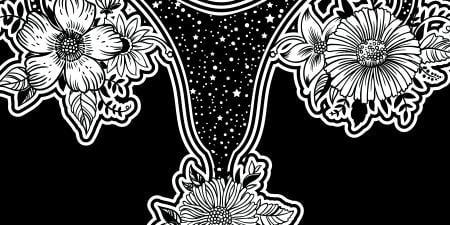Paul Cederna, then-president of the Plastic Surgery Foundation, began his 2017 address at the American Society of Plastic Surgeons (ASPS) annual meeting by stating that plastic surgeons’ “goal is to give back what was lost—we strive to do the impossible. And many times we achieve that goal” [1]. As members of a diverse specialty that does not claim particular disease processes or areas of the body, plastic surgeons—from Harold Gillies’s use of staged reconstruction to restore the faces of veterans, to Nobel laureate Joseph Murray’s completing the first successful human kidney transplant, to the advent of hand transplantation [2, 3]—have historically defied what was thought to be surgically impossible. In addition to surgical techniques, plastic surgeons like Donald Laub have challenged the role of the surgeon beyond the local operating room—in Laub’s case, by creating Interplast™, a pioneering global surgery program providing reconstructive surgical care to patients in Latin America and Asia [4]. Recently, plastic surgeons have lead physician presence on social media for the purposes of both advertising and professional networking. Plastic surgery is often on the leading edge of what is expected of surgeons, both inside and outside of the operating room.
For this reason, plastic surgery was the subject of the AMA Journal of Ethics 2010 theme issue, “Ethics in Cosmetic and Reconstructive Plastic Surgery.” This issue covered advertising, the ethics of aesthetic surgery, and face transplantation. Given the advances in both aesthetic and reconstructive surgery, as well as the changing ways plastic surgeons interact with patients and society, the current theme issue, “Ethical Considerations in Plastic and Reconstructive Surgery,” aims to examine novel ideas and issues that have evolved over the past eight years since the flagship issue, such as the role of the surgical resident in patient care, the use of social media in advertising, and the establishment of aesthetic norms.
As a specialty known for being “the surgeon’s surgeon,” given plastic surgery’s collaborative role in cases across surgical specialties, I wanted to address issues that are pertinent to any academic surgeon—namely, the role of the learner within the operating room. Two cases in this issue address this familiar relationship, which can often cause conflict between the physician and the patient. Michael J. Kirsch and Steven J. Kasten discuss how to properly disclose trainee participation during the informed consent process in a case in which a patient is coerced into agreeing to the resident surgeon’s involvement. Responding to a case of a surgical complication, Jean-Nicolas Gallant and Alexander Langerman argue that advance planning, better communication, and proper informed consent are key to ethically and effectively running two operating rooms with the help of learners. And Chad M. Teven and Scott B. Grant, the previous guest editor for “Ethics in Cosmetic and Reconstructive Plastic Surgery,” write about plastic surgery ethics and its place in the broader field of surgical and medical ethics.
Ethically problematic social media presence for the purposes of both self-promotion and advertising on sites such as Twitter, Snapchat, and Instagram has been an area of concern, prompting guidance from academics [5] as well as the ASPS [6]. Through discussion of a case of a patient who consented to sharing images of her operative case on social media but feels that her surgical experience was disrespected, Katelyn G. Bennett and Christian J. Vercler review the existing guidelines on the professional and ethical use of patient images on social media and the downsides of “medutainment.” Using the framework of institutional betrayal, Carly P. Smith and Daniel George explore the possible harms to patients of plastic surgeons’ promotion of nonevidence-based aesthetic procedures, such as the Vampire Facelift®, and how these can be avoided by educating patients through social media.
Beyond social media and plastic surgery, this issue aims to explore the meaning of aesthetic in the context of women’s recovery from breast cancer and the specialty’s unique role in simultaneously contributing to the “beauty” of healing from illness and in defining what is anatomically “normal.” Inspired by the recent Journal of the American Medical Association (JAMA) article about tattooing following breast reconstruction [7], I invited Lisa Franczak, owner and artist at Rose Red Tattoos, to reflect on her experience providing areola restoration and camouflage tattoos to survivors of breast cancer. From a physician’s perspective, Jeffery H. Kozlow argues that though plastic surgeons should be aware of and refer for camouflage tattooing, they should only perform breast reconstructive procedures that aim at restoring the patient’s premastectomy anatomy. Devan Stahl and Vercler take a historical approach to argue that plastic surgeons’ use of patient images and videos on Snapchat exploits their patients by sexualizing and objectifying their bodies, even if patients give consent. Finally, William J. Rifkin, Rami S. Kantar, Safi Ali-Khan, Natalie M. Plana, J. Rodrigo Diaz-Siso, Manos Tsakiris, and Eduardo D. Rodriguez examine the psychosocial effects of facial reconstruction and facial transplantation.
Two other articles discuss regulations related to advertising and accessing plastic surgery. Pablo L. Gutierrez and Debra J. Johnson discuss current, sometimes unethical, cosmetic marketing practices and the American College of Plastic Surgeons guidelines for the use of patient images. And William M. Kuzon, Emily Sluiter, and Katherine M. Gast argue that veterans’ inability to access gender-affirming surgery through the Veterans Health Administration denies medically necessary gender-affirming care to a minority population and reinforces the discrimination facing transgender people.
The plastic surgeon on television is popularly portrayed as a high-status cosmetic physician catering to the rich and famous, which is far from the daily care most plastic surgeons provide. Although this stereotype is challenged throughout the issue, it is the particular focus of the podcast. Shane Morrison discusses the concept of “surgical justice” [8] and ways this idea has informed his career and his research in gender-affirming surgery. And Cedar Neary provides a patient perspective on barriers to gender-affirming surgery and reflects on how his view of surgical justice has been shaped by his dual experience as a patient and medical student.
In the words of the sixteenth-century Italian surgeon, Gaspare Tagliacozzi, plastic surgeons “restore, rebuild, and make whole those parts which nature hath given, but which fortune has taken away. Not so much that it may delight the eye, but that it might buoy up the spirit, and help the mind of the afflicted” [9]. From #PlasticSurgery to face transplantation, plastic surgeons continue to honor this quotation from the father of plastic surgery and to occupy their historic place as leaders in surgical innovation. As a specialty constantly on the edge of the impossible, continually revisiting the ethics of procedures and practices within the field is necessary. Plastic surgery is a diverse specialty, and the aim of this issue is to provide a timely discussion of topics that are specialty specific as well as those that have implications for surgery and society more generally, including the use of social media, learners in the operating room, and aesthetics.
References
-
Opening ceremonies and welcome reception. 86th Annual Meeting of the American Society of Plastic Surgeons; October 6-10, 2017; Orlando, FL.
- Hultman CS, Friedstat JS. The ACAPS and SESPRS surveys to identify the most influential innovators and innovations in plastic surgery: no line on the horizon. Ann Plast Surg. 2014;72(6):S202-S207.
- Welman T, Villani V, Shanmugarajah S, Hettiaratchy S. From kidney transplants to vascularized composite allografts: the role of the plastic surgeon in transplantation. Vascular Compos Allotransplantation. 2015;2(4):71-74.
-
Resurge International. Our history. http://www.resurge.org/about_us/history_formerly_interplast.cfm. Accessed November 21, 2017.
- Dorfman RG, Vaca EE, Fine NA, Schierle CF. The ethics of sharing plastic surgery videos on social media. Plast Reconstr Surg. 2017;140(4):825-836.
-
American Society of Plastic Surgeons. Code of ethics of the American Society of Plastic Surgeons. https://www.plasticsurgery.org/documents/Governance/asps-code-of-ethics.pdf. Updated September 25, 2017. Accessed November 21, 2017.
- Allen D. Moving the needle on recovery from breast cancer: the healing role of postmastectomy tattoos. JAMA. 2017;317(7):672-674.
- Morrison SD, Swanson JW. Surgical justice. Plast Reconstr Surg. 2015;136(2):291e-292e.
-
Tagliacozzi G. De Curtorum Chirurgia per Insitionem. Thomas JH, trans. New York, NY: Classics of Medicine Library; 1996.



